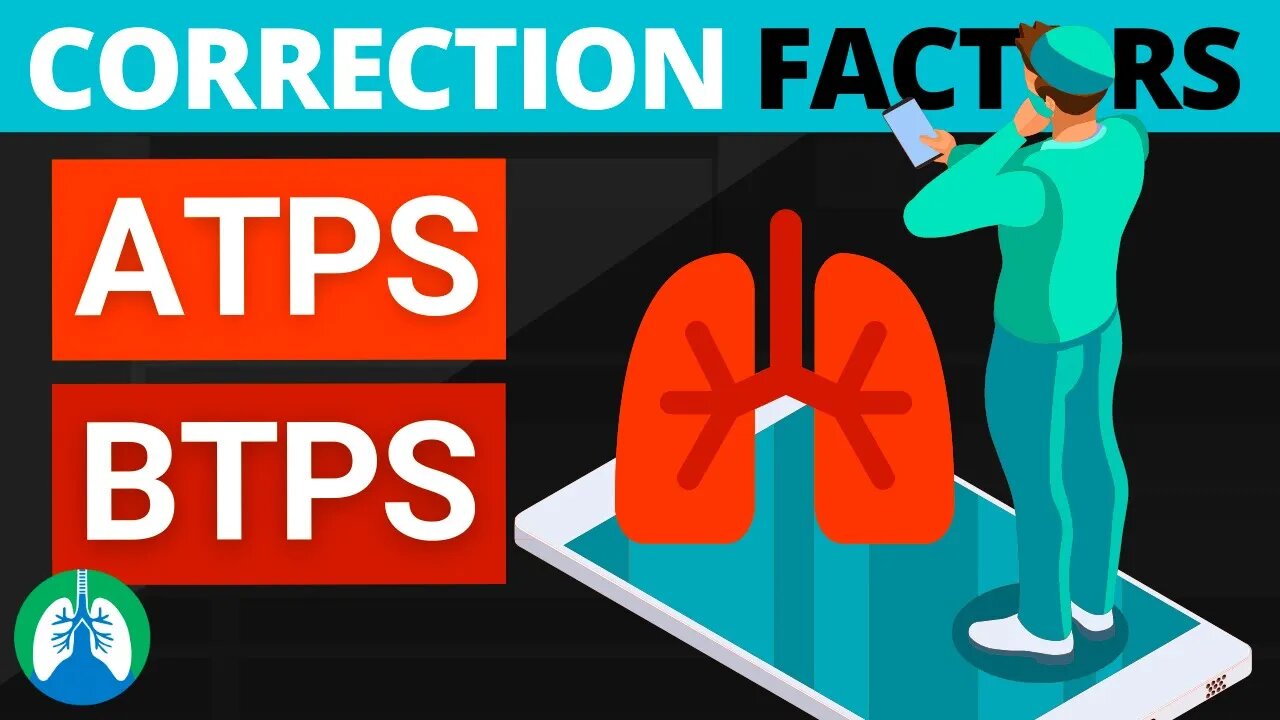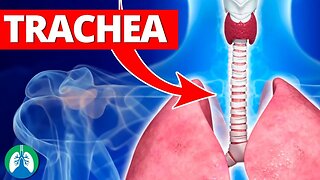Premium Only Content

Pulmonary Temperature Correction Factors (ATPS and BTPS) Quick Explainer Video
What are pulmonary temperature correction factors? What is ATPS vs BTPS?
💥Respiratory Therapy Definitions [Glossary] ➜ ➜ ➜ https://bit.ly/3g6s4Pj
➡️ What are Correction Factors?
Correction factors are needed in respiratory care to convert gas volumes from one particular set of conditions to another. They are most commonly used in pulmonary function laboratories but may also be used with mechanical ventilators as well. The two that we need to discuss are ATPS and BTPS.
🟦 ATPS is an abbreviation that stands for ambient temperature and pressure, saturated with water vapor.
🟦 BTPS is an abbreviation that stands for body temperature and pressure, saturated with water vapor.
➡️ Why Use a Temperature Correction Factor?
In general, there is a temperature difference between the spirometer and the patient's body temperature which affects the results that we see. This is why we must use these temperature correction factors. As Respiratory Therapists, we need to use the BTPS correction to convert the volume and flow that is measured at ambient conditions to the conditions that are within the patient's lungs. This means that essentially all patient flows, volumes, and capacities must be mathematically converted from ATPS to BTPS conditions. The BTPS correction displays a patient's true effort which is why it's standard practice to report all flows and volumes in BTPS.
➡️ ATPD
You may have also seen ATPD with is an abbreviation that stands for Atmospheric temperature, pressure, dry. However, the only thing to know about this one is that it should not be used for reporting any pulmonary function results. Again, for this video, we just wanted to provide you with a brief overview of this topic. We'll be breaking it down into much more detail in a separate video.
💥Respiratory Therapy Definitions [Glossary] ➜ ➜ ➜ https://bit.ly/3g6s4Pj
—————
📗 BEST STUDY GUIDES FOR YOU
▪ TMC Test Bank 👉 http://bit.ly/2IGeqSu
▪ Hacking the TMC Exam 👉 http://bit.ly/2XBc8do
▪ TMC Exam Bundle (Save $) 👉 https://bit.ly/34pqEsV
▪ Daily TMC Practice Questions 👉 http://bit.ly/2NnXh3C
💙MORE FROM RTZ
▪ Free TMC Practice Exam 👉 http://bit.ly/2XlwASL
▪ Free RRT Cheat Sheet 👉 http://bit.ly/2IbmOKB
▪ Resources for RT's 👉 http://bit.ly/2WVV5qo
▪ Testimonials 👉 http://bit.ly/2x7b5Gl
🌐FOLLOW US
▪ Instagram 👉 http://bit.ly/2FhF0jV
▪ Twitter 👉 http://bit.ly/2ZsS6T1
▪ Facebook 👉 http://bit.ly/2MSEejt
▪ Pinterest 👉 http://bit.ly/2ZwVLPw
🚑MEDICAL DISCLAIMER
This content is for educational and informational purposes only. It is not intended to be a substitute for professional medical advice, diagnosis, or treatment. Please consult with a physician with any questions that you may have regarding a medical condition. Never disregard professional medical advice or delay in seeking it because of something you watch in this video. We strive for 100% accuracy, but errors may occur, and medications, protocols, and treatment methods may change over time.
💡AFFILIATE DISCLAIMER
This description contains affiliate links. If you decide to purchase a product through one of them, we receive a small commission at no cost to you.
—————
⏰TIMESTAMPS
0:00 - Intro
0:18 - Correction Factors
0:40 - ATPS
0:48 - BTPS
0:55 - Why Use a Temperature Correction Factor?
1:48 - ATPD
—————
🖼CREDIT FOR MUSIC AND GRAPHICS:
▪ Music licensed from Audiojungle.net/
▪ Graphics: Canva.com, Freevector.com, Vecteezy.com, and Pngtree.com
#RespiratoryTherapy #RespiratoryTherapist #RespiratoryTherapySchool
-
 3:21
3:21
Respiratory Therapy Zone
1 year agoTrachea (Medical Definition) | Quick Explainer Video
370 -
 1:42:56
1:42:56
Kim Iversen
3 hours agoAMERICA HUMILIATED: U.S. Generals Obey Israeli Demands And Hasbara Floods Social Media
18.5K42 -
 LIVE
LIVE
MattMorseTV
2 hours ago $1.91 earned🔴CHILLING + TALKING🔴
389 watching -
 LIVE
LIVE
SpartakusLIVE
1 hour agoNEW Black Ops 7 BETA || WZ too! And PUBG later?
79 watching -
 LIVE
LIVE
StoneMountain64
7 hours agoBLACK OPS 7 EARLY ACCESS GAMEPLAY
43 watching -
 LIVE
LIVE
ZWOGs
7 hours ago🔴LIVE IN 1440p! - Resident Evil 4 First Playthrough - Day 4 -ENDING?? - Come Hang Out!
49 watching -
 6:49:16
6:49:16
Dr Disrespect
8 hours ago🔴LIVE - DR DISRESPECT - BLACK OPS 7 MULTIPLAYER GAMEPLAY - NEW!
132K10 -
 1:26:12
1:26:12
Steven Crowder
10 hours agoThe Left is Violent (Part 2) | Change My Mind
417K701 -
 2:11:35
2:11:35
Pop Culture Crisis
4 hours agoElon Declares 'CANCEL NETFLIX' Trump Threatens Hollywood, Bad Bunny Superbowl Boycott? | Ep. 927
26.9K4 -
 3:26:05
3:26:05
Barry Cunningham
5 hours agoPRESIDENT TRUMP IS READY TO GO SCORCHED EARTH! SHUTDOWN DAY 2 BRIEFING!
30.9K22
